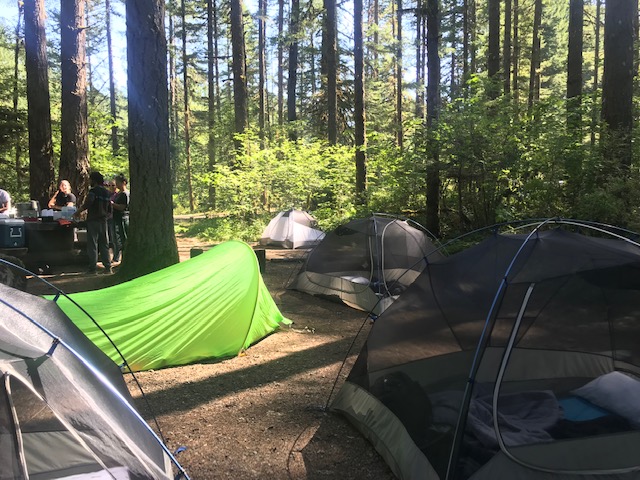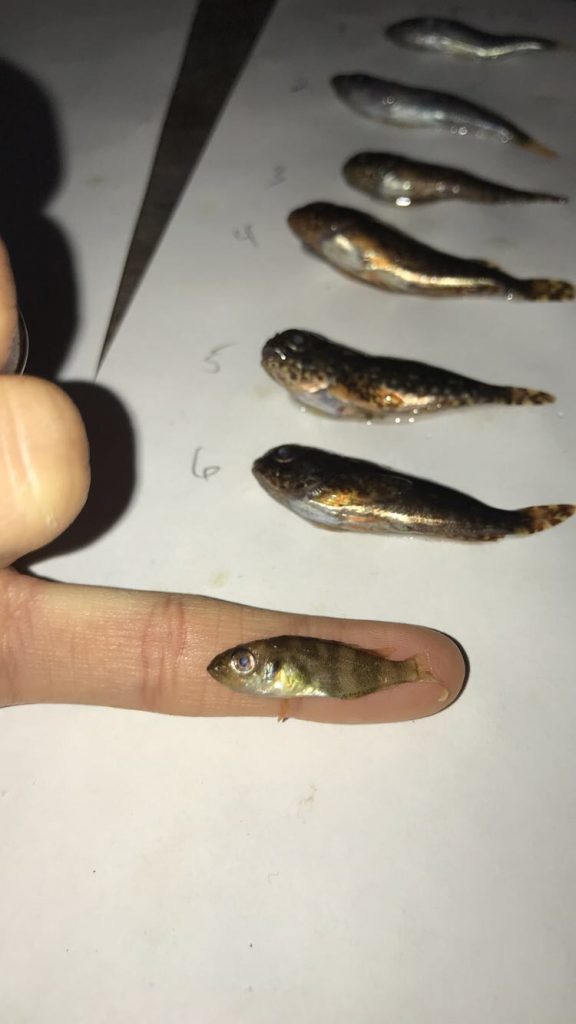August 19th, 2019:
As predicted in my last blog, I blinked and it’s Week 10. So much has happened these past few weeks no wonder they completely sped by. For one, we had our final symposium and poster session last Friday! The day before that, my mentors and some members of the Marine Reserves program took me out for a farewell lunch at Local Ocean and got me the sweetest gift (plus a bag of sweet & salty kettle corn—my absolute favorite!!) I’m really going to miss the people I’ve gotten to work with these past 10 weeks; I seriously don’t think I could’ve dreamed up a better work environment. I’m extremely thankful for everything and everyone who has made this summer so memorable!
Though we wrapped up our last round of field days a few weeks ago, I still have things to keep me busy in the office before I officially head out. With whatever down-time I’ve had this summer (when I wasn’t in the intertidal, SMURF-ing, coordinating Sea Star Surveys, or creating my poster and presentation for the final symposium), I was down a Google Scholar rabbit hole sorting through all the research articles I could find that were published on rocky intertidal habitats along the Oregon Coast. The Marine Reserves will be presenting a huge progress report to the state legislative body in 2023 and they’ve asked for my help in making an Annotated Bibliography. Essentially, my job is to compile all the research that has ever been conducted in rocky intertidal habitats both inside and outside the Marine Reserves, before and after their implementation in 2012. As I’ve basically finished it off at this point, I can definitely say I know way more than I ever thought I’d know about Oregon rocky intertidal life.
As I began my series of blogs with dessert, I feel it absolutely necessary to conclude with it as well. Just to preface a bit before I dive completely in: before this summer, I had only been to Oregon once. I was 12 and stayed in a really cute beach town up north—Manzanita. During my stay, I had a genuinely life-changing dessert at a Mom & Pop restaurant on the coast: a slice of marionberry pie. Since then, I’ve deemed the marionberry as my ULTIMATE favorite fruit and marionberry pie as my ULTIMATE favorite dessert. At the beginning of this summer, I vowed to have a slice of marionberry pie (as I’m now back in Oregon, marionberry-territory). Well, unfortunately Newport isn’t close to any wild marionberry bushes so I had to compromise for its less lavish cousin: the wild blackberry. There are hundreds of ripe blackberry bushes scattered around Hatfield, so last week I went on a 3-mile loop and picked as many blackberries as my bucket could carry. I brought them back to the apartment and my roommates and I made a fresh blackberry pie to conclude the amazing summer. Though nothing can ever compare to a slice of marionberry pie in my book, this pie came pretty darn close.


So I guess this is goodbye—goodbye to the amazing people I’ve gotten to meet, goodbye to the amazing foods I’ve gotten to eat, and goodbye to the amazing memories I’ve made in this quaint little beach town. I’m going to miss everything tremendously. Thanks for staying tuned with my life as a Sea Grant Scholar, and thanks for (hopefully) not rolling your eyes every time I’ve rattled on about food :) And thank you, Newport, for the most amazing summer!
-Dominique :)

















